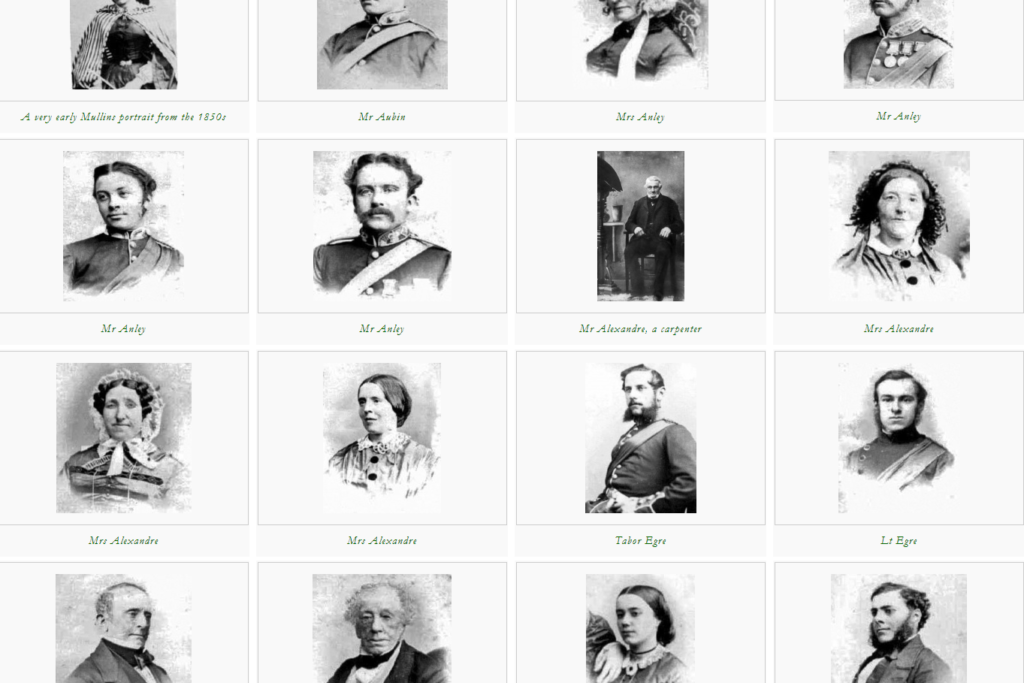Henry Mullins started working at 230 Regent Street in London in the 1840s and moved to Jersey in July 1848, setting up a studio known as the Royal Saloon, at 7 Royal Square. Initially he was in partnership with a Mr Millward, about whom very little is known.
An advertisement in the Jersey Times of 5 June 1849 states that “Portraits are taken in groups of two or three, or the single figure, or bust, and of various sizes, even small enough for a ring, the charge for which is reduced to one half of that in London, viz: 10s 6d for the portrait complete. Instruction given in the Calotype, Energiatype, or photographic processes, and proficiency guaranteed for a fee of five guineas”.
After his death his collection of over 20,000 negatives was acquired in 1883 by Clarence philip Ouless and formed part of his collection which was given to La Société in 2006.

henry Mullins was a photographer who took portraits of people he would then print these photos on a carte de visite as a small albumen print, (the first commercial photographic print produced using egg whites to bind the photographic chemicals to the paper) which was a thin paper photograph mounted on a thicker paper card. Henry Mullins was the first professional photographer to come to Jersey and establish a portraiture business in the very early days of photography.His speciality was cartes de visite and the photographic archive of La Société contains a massive collection of these. His online archive contains 9600 images, but the majority of these are sets of up to 16 photographs taken at a single sitting. In those times even 10s 6d was a substantial sum to pay to have one’s photograph taken, and included among his subjects are many of the island’s affluent and influential people.






Some headshots by Mullins of both Jersey men and women produced as vignette portrait which was a common technique used in mid to late 19th century.
His photographs are taken very differently as some people were sitting from an angle and others are sat looking straight at the camera, these different photos change the tone of each photo as you could get one to look more professional and others look more like memorable portraits to keep, it also depends on their facial expression and whether they are looking at the camera or to the side. The top right image almost looks like it a family portrait and there is more than one people in the photo as we can very clearly see someone’s hands on the girls shoulder which shows u that Henry Mullins took all types of photos whether they were single portraits or group portraits. Personally I really like the one in the middle on the bottom row as you can see a dark shadow behind the girl an the it begins t be light again which really adds effect to the photo. You can also see some of the peoples clothes so its not just a face that is visible, this makes the photo look more interesting to look at. I also like how Henry has written the persons name under each of their photos so that they could be remembered.


Here we have an article explaining how Henry has opened his new studio in 1848, this gives us so much information, this helps us understand when he started to open his studio and take photos. The small bit of article helps me see that he was a good photographer and that people wanted him to take portraits of them, they views him quite well.

A good blog post that provides an overview of Mullins studio practice in St Helier and working methods. However, your illustrations/ images of his work is low quality/ resolution. Copy images from our blogpost and replace.